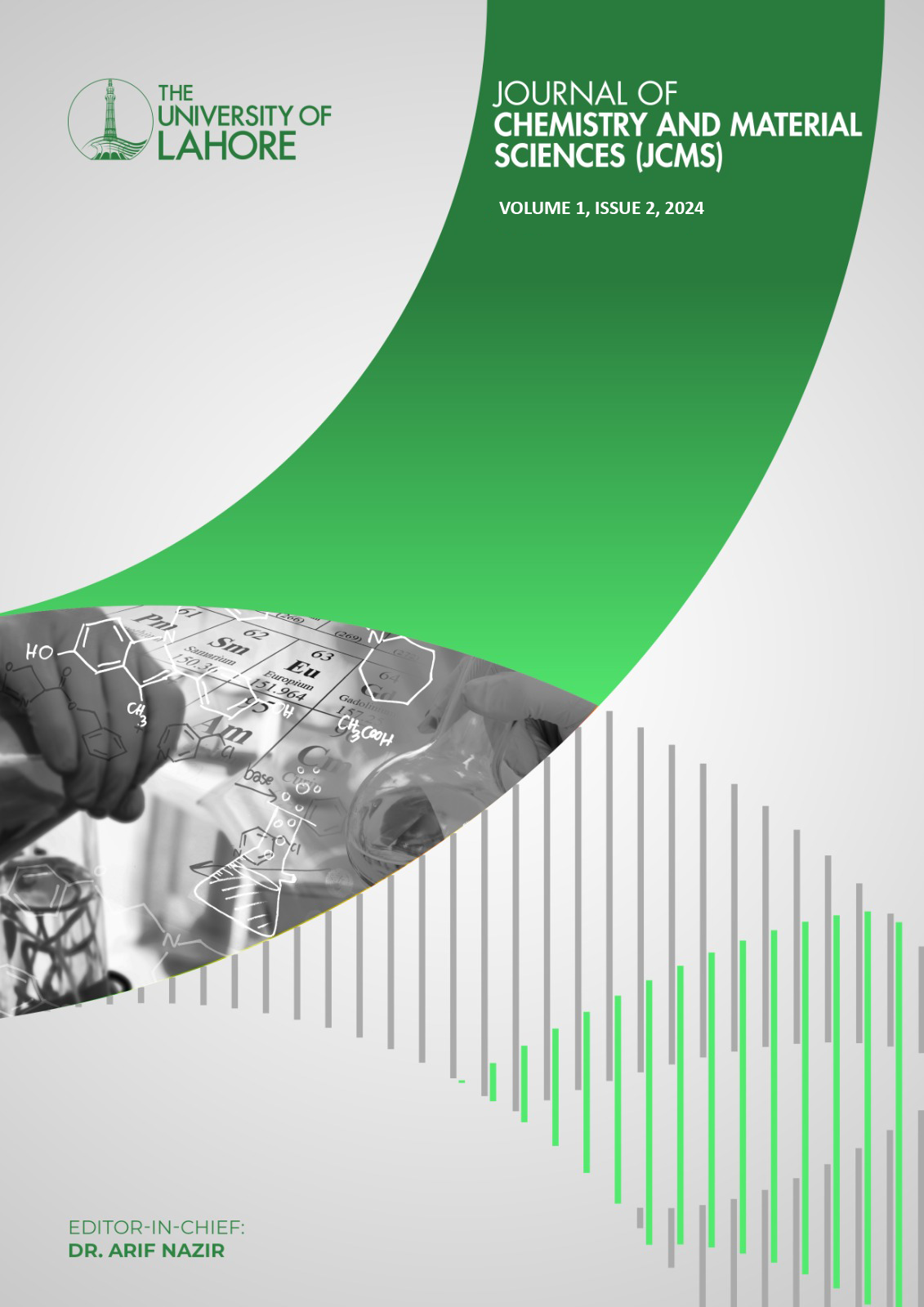The Evaluation of Heavy Metals Contamination in Selected Vegetable Crops from Shakargarh Region, Pakistan
Determination of Toxic Potentials in Vegetables
DOI:
https://doi.org/10.71120/j.chem.mater.sci..v1i2.3458Abstract
Toxicity of potential heavy metals may cause serious complications for human health and elevated degrees of toxicity damage the functioning of brain, kidney, liver and other important living organs. Their significant role in the various disciplines such as industrialization, domestic waste, agricultural, and medicinal distribution have led to environmental concerns by raising human health issues. However, cadmium (Cd), chromium (Cr), copper (Cu), lead (Pb), nickel (Ni), and zinc (Zn) rank among the priority metals that are of public health significance and highlighted in current study. These toxic potentials were assessed in selected vegetables (Carrot, Garlic, Radish, Pea plant) grown in ten different areas such as (Basra Jalla, Deen Pur, Chakwal, Bhatti Afghana, Mothi, Kot Nainan Sohawara, Ikhlas Pur, Kotli Agwal, Pindi Umra) of Shakargarh region. The results showed that Pb concentration (46.03 ppm) was found to be beyond the recommended limit of the World Health Organization (WHO) in Radish (R2) grown in the Ikhlas Pur area of Shakargarh. The level of toxic potentials ranges Pb˃ 46.03, Cr ˃ 27.38 ppm, Ni ˃ 6.28 ppm, Cd ˃ 1.447 ppm, Cu ˃ 22.38 ppm and Zn > 94.37 ppm. This high concentration is mainly due to domestic effluent discharge to irrigated soil and it confirmed that the root of plants builds up more heavy metals which ultimately triggered to the vegetables. It is assumed that tannery surroundings contain Cr higher than the recommended concentration for human consumption. Therefore, standard operating parameters (SOPs), for wastewater treatment, and public awareness must be recommended to decrease the concentration of toxic potential in vegetables which may cause more harmful effects on human health and environment.


